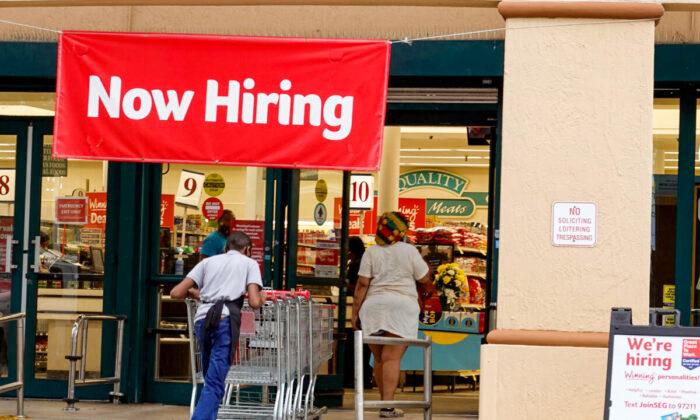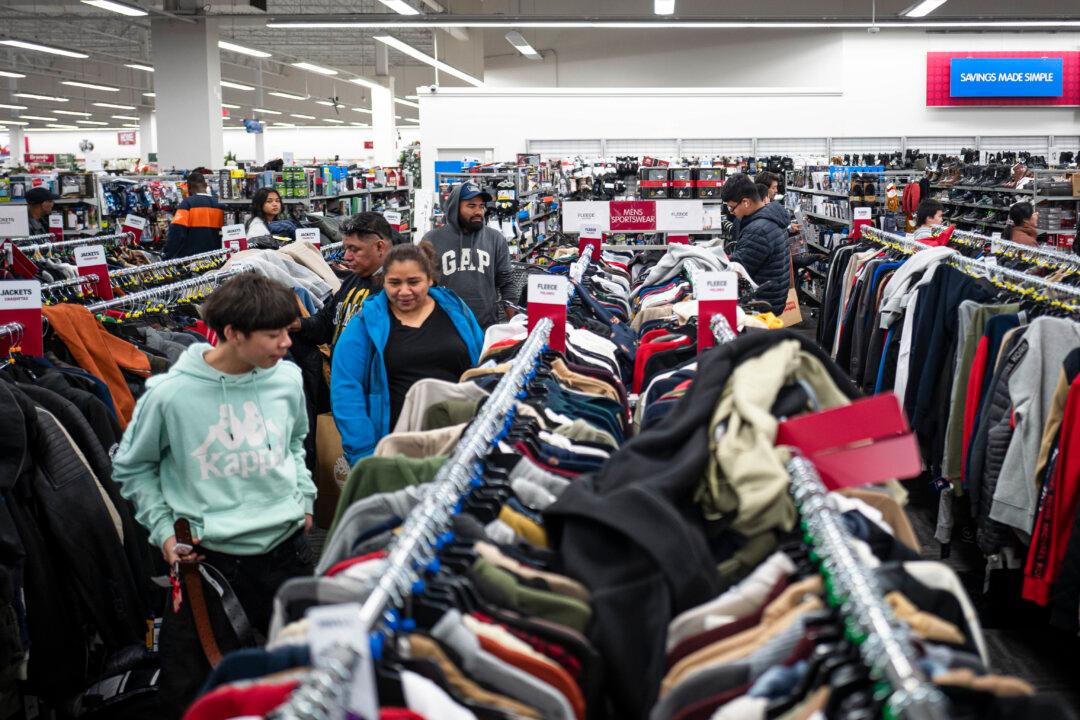The U.S. economy added 390,000 jobs in May, topping the market estimate of 328,000. Even though employment growth was better than anticipated, it was the slowest since April 2021.
Average hourly earnings edged up 0.3 percent month-over-month, while annualized hourly early earnings increased by 5.2 percent. Wage growth is less than the 8.3 percent inflation rate, implying that workers are losing money as their expenditures climb faster.
Average weekly hours held at 34.6, while the labor force participation rate rose slightly from a month earlier to 62.3 percent.
Economists forecasted that job growth would slow in coming months.
A major surprise of the report was the loss of 61,000 retail jobs in May, which was led by declines in merchandise stores (minus 33,000), apparel (minus 9,000), and building material and garden supply stores (minus 7,000). Despite job losses, retail employment remains 159,000 over its pre-pandemic level.
Employment in leisure and hospitality increased by 84,000, with food services and accommodation accounting for most of the increase. That’s still 1.3 million jobs or 7.9 percent below February 2020 levels.
Business and professional services added 75,000 jobs, which is 821,000 higher than before the coronavirus pandemic, while transportation and warehousing jobs increased by 47,000, which is 709,000 positions above its pre-crisis level.
In May, the BLS survey found that 1.8 million people couldn’t work because their employer shut down or went out of business because of the pandemic.
The BLS also revised total nonfarm payroll employment for the previous two reports. In March, the U.S. economy added 398,000 jobs, down 30,000. The change for April was updated by 8,000, increasing the total figure to 436,000.
“Under a backdrop of a tight labor market and elevated inflation, monthly job gains are closer to pre-pandemic levels. The job growth rate of hiring has tempered across all industries, while small businesses remain a source of concern as they struggle to keep up with larger firms that have been booming as of late,” Nela Richardson, ADP chief economist, said in a statement.
The number of Americans submitting their resignation letters also tumbled to 4.42 million in April, down from 4.45 million in March. The quits rate held steady at 2.9 percent.
Will Fed Moves Weigh on Labor Market?
In recent months, the debate unfolding in economic circles and on Wall Street is how the Federal Reserve’s tightening of monetary policy will affect the U.S. economy.Now that the central bank is on a path of raising the neutral Fed funds rate to around 2.5 percent by the end of the year, many economists question if this will douse the red-hot labor market and derail growth.
Typically, when interest rates are on an upward trajectory, consumer spending and business investments take a hit. This inevitably leads to a reduction in hiring and a jump in unemployment.
“We will go until we feel we’re at a place where we can say financial conditions are in an appropriate place, we see inflation coming down. We’ll go to that point. There won’t be any hesitation about that,” Powell said. “You’d still have a strong labor market if unemployment were to move up a few ticks. I would say there are a number of plausible paths to have a soft, as I said, softish landing. Our job isn’t to handicap the odds, it’s to try to achieve that.”
Other Fed officials agree with this assessment, including Fed Governor Christopher Waller.
“The unemployment rate will increase, but only somewhat because labor demand is still strong—just not as strong—and because when the labor market is very tight, as it is now, vacancies generate relatively few hires,” Waller stated. “Thus, reducing vacancies from an extremely high level to a lower—but still strong—level has a relatively limited effect on hiring and on unemployment.”
A potentially weakening labor market is unlikely to dissuade the Fed hawks from slowing down aggressive tightening efforts, says Ipek Ozkardeskaya, a senior analyst at Swissquote Bank.
“So, the Fed will certainly not change its mind on the soft jobs data,” she wrote in a research note. “Fed Vice Chair Lael Brainard has been clear that the Fed is unlikely to stop raising rates after the two 50bp hikes expected in the next two FOMC meetings. The era when the Fed threw money to the market to boost jobs is behind.”
When the rate-setting Federal Open Market Committee (FOMC) meets later this month, it’s widely anticipated that the central bank will pull the trigger on another half-point increase.





